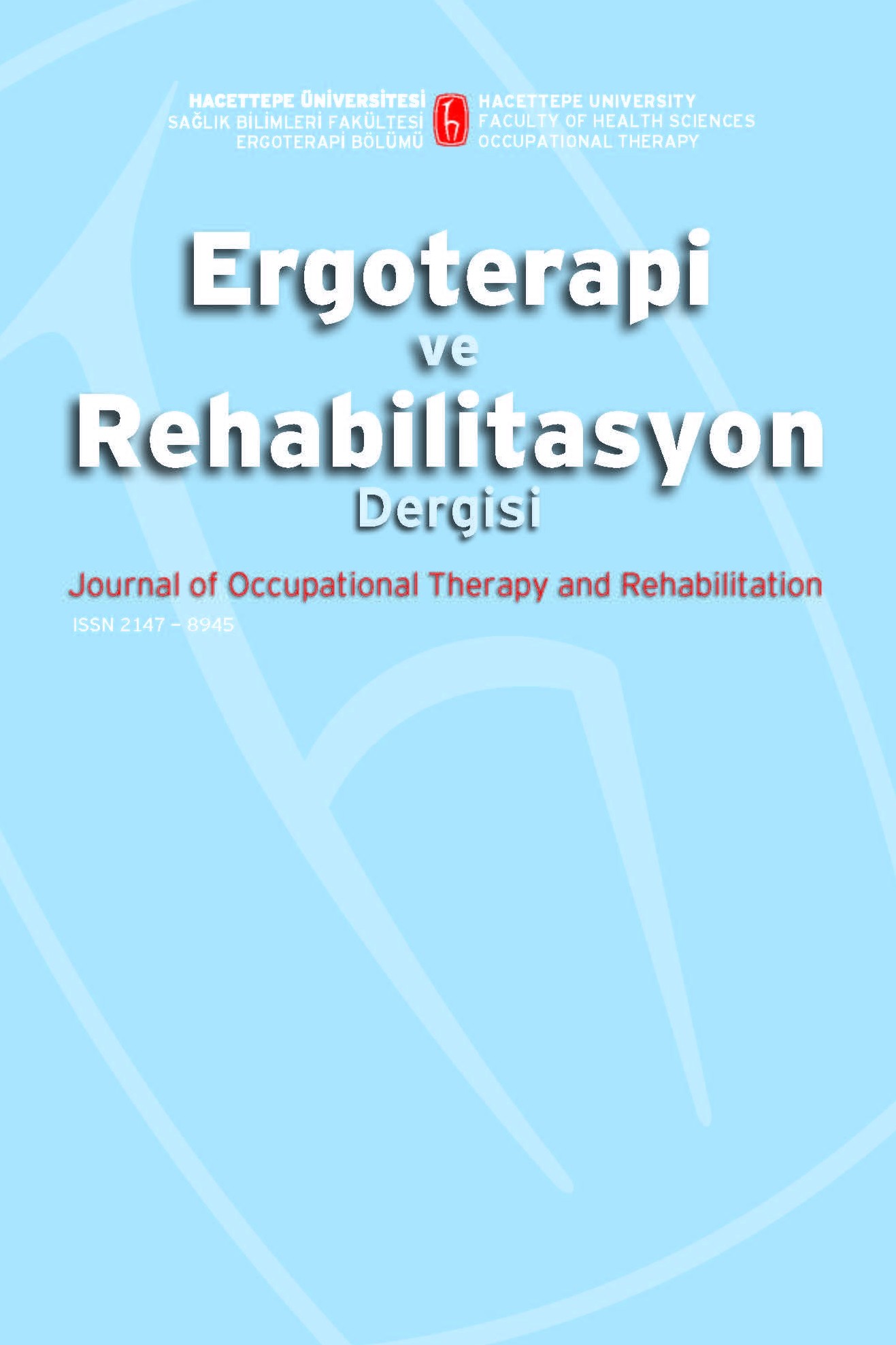İlköğretim Okullarında Okul Mobilyasının Antropometrik Uygunluğunun Değerlendirilmesi – Pilot Çalışma
Amaç: Bu çalışmanın amacı, ilköğretim öğrencilerinin antropometrik özellikleri ile kullandıkları okul mobilyasının uyumunu incelemek ve sonuçların, ders postürü ve kas-iskelet sistemi problemleri üzerinde oluşturduğu etkileri belirlemektir. Gereç ve yöntem: 140 ilköğretim öğrencisinin, antropometrik özellikleri ve okul mobilyasının boyutları değerlendirilmiştir. Sonuçlar: Öğrencilerin kendi antropometrik özelliklerine uygun okul mobilyası kullanmadıkları bulunmuştur (sıra yüksekliği %96.4’ü için, sandalye oturma yeri yüksekliği %94.3’ü için, sandalye oturma yeri derinliği %75.7’si için uygun değil). Sıralarının yüksek, sandalyelerinin yüksek ve derin olması sonucunda, ders boyunca sandalyenin önünde ve sırt desteksiz olarak oturdukları gözlenmiştir (p<0.05). Tartışma: Sandalye ve sıra yüksekliklerinin ve eğimlerinin kişiye göreayarlanabilir şekilde tasarlanması, postüral bozuklukları önleyerek çocukluk çağındaki spinal ağrı riskini azaltacaktır. İleride fizyoterapistler ve ergoterapistlerin okullardaki danışmanlık rollerinin artarak koruyucu fizyoterapi yaklaşımlarını yaygınlaştırılması ile kas-iskelet sistemi hastalıklarının önlenmesi, erken tedavisi,sağlık ve ekonomiye katkıda bulunulacağı düşünülmektedir
Anahtar Kelimeler:
Mobilya, Antropometri, Ergonomik
Investegation of Antropometric Suitability of School Furniture in Primary Schools—A Pilot Study
Purpose: Theaim of thestudy is to investigate the congruity of antropometric properties of students with the furniture they use at the school and to state the effects of this results on posture and musculoskeletal problems. Material and Methods: Onehundredand 40 primary school students’ antropometric properties and furniture sizes are measured. Results: It is foundthatstudents do not use school furniture appropriate for their antropometric properties (height of tablewas not suitablefor %96.4 of thestudents, height of chairwas notappropriatefor %94.3 of themanddepth of thechairwas not appropriatefor %75.7 of them). It is observedthatstudents sit in front of thechairwithoutbacksupportduringthelesson as thetablesandthechairsarehighandseating is deepforthem (p<0.05). conclusion: Postural disorders can be prevented and spinal pain risk can be decreased due to the design of adjustable chairs and tables with the use of suitable equipment. It is thought that spread of preventive physiotherapy interventions by increasing supervision of physiotherapists and occupational therapists in school will prevent musculoskeletal injuries, provide early treatment and contribute healthand economy in the future
Keywords:
Furniture, Anthropometry, Ergonomics,
- ISSN: 2147-8945
- Yayın Aralığı: Yılda 3 Sayı
- Başlangıç: 2013
- Yayıncı: Hacettepe Üniversitesi Sağlık Bilimleri Fakültesi
Sayıdaki Diğer Makaleler
Evren AÇIK, Hülya KAYIHAN, Orkun Tahir ARAN
Fahriye AKDEM, Burcu Semin AKEL
Ataksili Bir Bireyde Sanal Gerçeklik Temelli Rehabilitasyon Uygulamasının Etkinliği-Olgu Raporu
Orkun Tahir ARAN, Barkın KÖSE, Semin AKEL, Çiğdem ÖKSÜZ
İlköğretim okullarında okul mobilyasının antropometrik uygunluğunun değerlendirilmesi pilot çalışma
Orkun Tahir ARAN, Evren AÇIK, Hülya KAYIHAN
